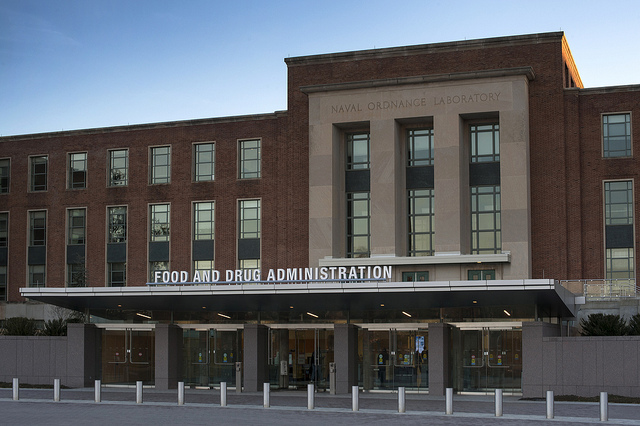
In 2021, the FDA actions that drew the most attention were not drug approvals. Across the country and around the world people closely followed the regulatory developments of Covid-19 vaccines and therapies on the path to emergency authorization. So far, of the three Covid vaccines that have received emergency authorization, the Pfizer and BioNTech vaccine is the only one that has secured full FDA approval.
That Covid vaccine, named Comirnaty, is one of 60 new drugs or biological products that received FDA approval in 2021. The total is just shy of the previous year when the agency approved 61 new drugs and biological products.
As in previous years, cancer drugs dominated the 2021 list of approved therapies. But there were other notable developments. 2021 saw new approvals in regenerative medicines. Mallinckrodt Pharmaceuticals won approval for Stratagraft, an engineered skin product that serves as a scaffold upon which skin cells of burn patients can grow. The agency also granted the first approval for a therapy that treats congenital athymia, a rare condition in which an infant is born without a thymus, the organ key to maturation of T cells. Enzyvant Therapeutics’ treatment involves implanting donor thymus tissue to reconstitute immunity.
.Another distinction about the list of approved drugs is the representation of neurological disorder drugs. The highest profile of these neuro drugs is probably Aduhelm, the Alzheimer’s disease drug from Biogen that won a controversial FDA approval in June. The drug had a mixed track record in clinical trials, but the regulator chose the accelerated approval pathway to bring the drug to the market and made it the first new Alzheimer’s therapy in nearly 20 years. Other new neuro drugs this year include Supernus Pharmaceuticals’ Quelbree, a treatment for attention-deficit hyperactivity disorder; Alkermes’s Lybalvi for schizophrenia and bipolar disorder I; and Qulipta, an AbbVie drug developed for migraine prevention.
Rare disease drugs are also well represented on the list of newly approved therapies. Many rare diseases have few available therapies. But regulatory decisions this year introduced new drug options for some of these disorders. Sarepta Therapeutics won approval for Amondys 45, the company’s third Duchenne muscular dystrophy drug. Apellis Pharmaceuticals got the green light for Empaveli, a therapy for the rare blood disorder paroxysmal nocturnal hemoglobinuria. That drug now competes against a blockbuster medicine marketed by AstraZeneca’s Alexion subsidiary. Sanofi won approval this year for Nexviazyme, a treatment for the inherited enzyme deficiency Pompe disease. The drug is the second approved therapy for Pompe, joining a Sanofi drug that was approved in 2006.
Some rare diseases received their first-ever therapies in 2021. For example, Albireo Pharma drug Bylvay became the first drug approved to treat pruritus, or severe itching, associated with the rare liver disorder progressive familial intrahepatic cholestasis. Pruritus is associated with several liver conditions, and pruritus drugs for other liver disorders also passed regulatory muster this year. Cara Therapeutics got the nod for Korsuva, which treats pruritus experienced by patients undergoing dialysis. Alagille syndrome, a disease that affects the bile ducts of the liver, also causes pruritus. Mirum Pharmaceuticals drug Livmarli received approval as a treatment for the itching caused by that disorder. In addition to becoming the first approved drugs for their respective conditions, these three pruritus drugs are also the first approved products for the companies that developed them.
Ultra-rare diseases pose challenges because the small patient population makes it difficult to find enough patients to run a well-controlled study. But there are still ways to generate the clinical data to support a regulatory submission. BridgeBio Pharma developed its drug, Nulibry, to treat molybdenum cofactor deficiency type A, a metabolic disorder estimated to affect fewer than 150 people worldwide. The 13 patients evaluated with the BridgeBio drug were compared to a natural history of patients who were diagnosed with the disease. Based on that comparison, the FDA approved Nulibry, making it the first approved therapy for the ultra-rare disorder, and the first approved product for BridgeBio.
Noteworthy within the tally of cancer drug approvals in 2021 was the continuing trend of targeted therapies for subsets of patients whose disease exhibits a particular genetic signature. EMD Serono drug Tepmetko was approved to treat non-small cell lung cancer (NSCLC) characterized by genetic alterations to a gene called MET. The drug now competes against a targeted Novartis therapy that addresses the same genetic mutation.
In May, the FDA approved Johnson & Johnson’s infused therapy Rybrevant for treating non-small cell lung cancer with a certain mutation to a cancer protein called epidermal growth factor. Takeda Pharmaceutical is now going after that same mutation with its newly approved oral drug, Exkivity. Cancer research is also broadening its scope to targets previously thought to be undruggable. Amgen’s new drug Lumakras addresses one such target, going after KRAS protein mutations on lung cancer cells.
Photo by FDA















